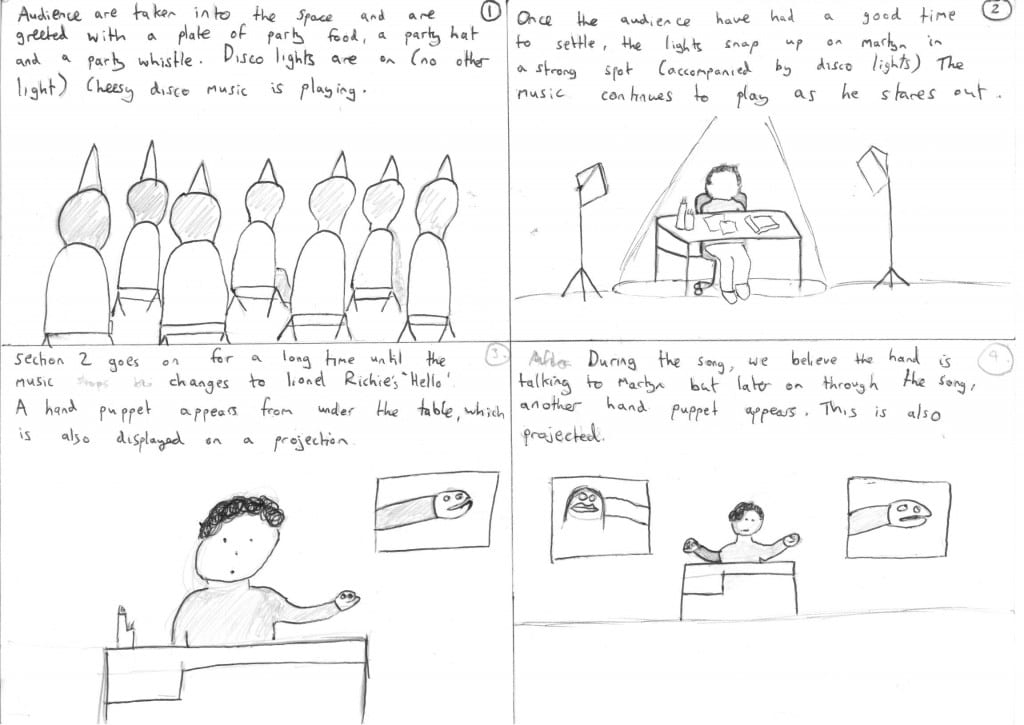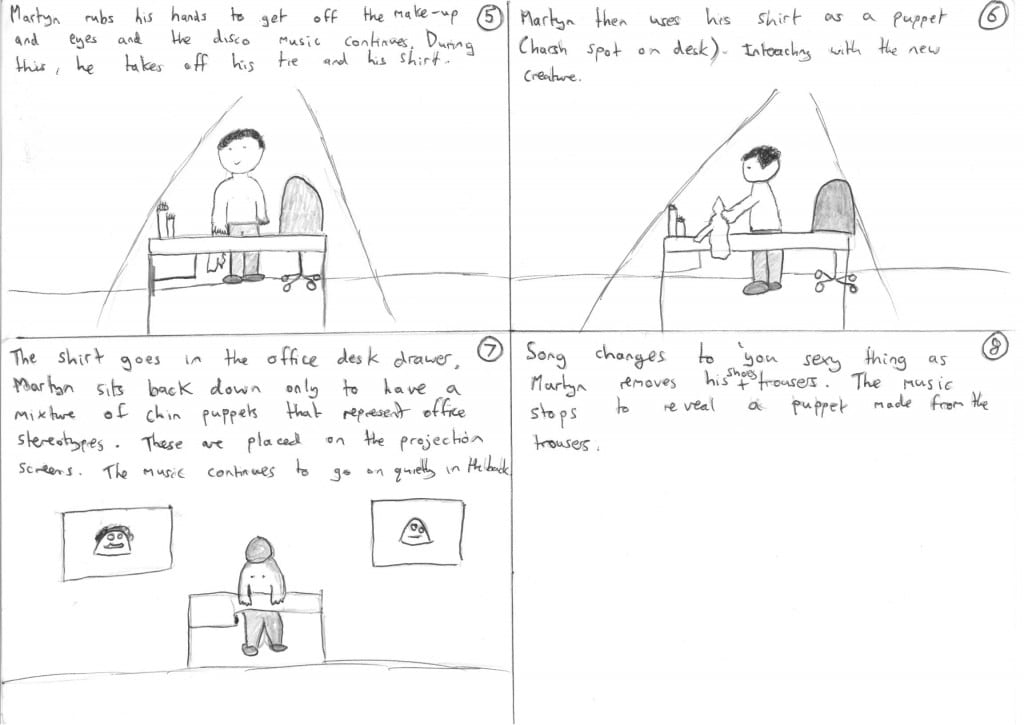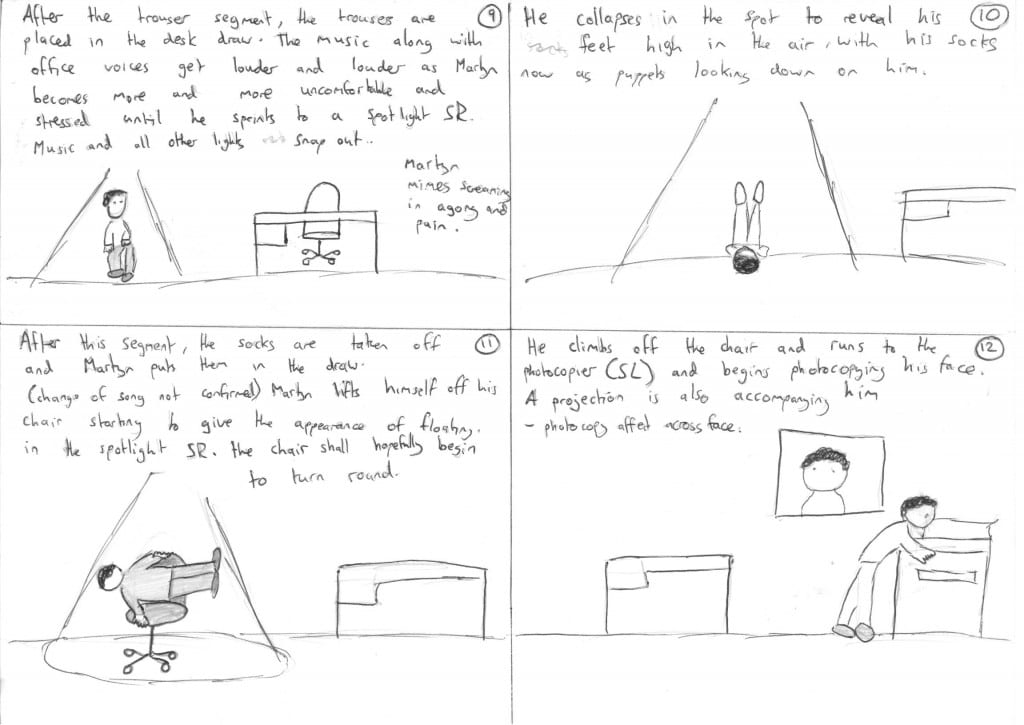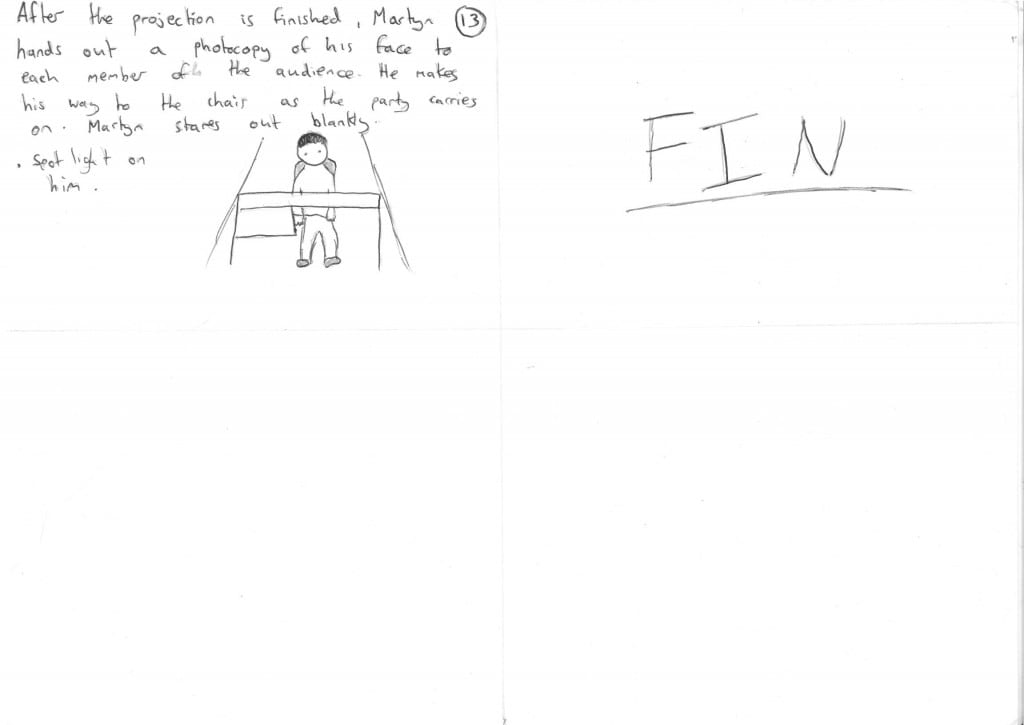The reading Solo in Soho: The Performer Alone by John Howell, was an interesting article that brought up many issues with the definition of solo performance and performance art. One comment in particular that struck me was that in the context of the solo performances, the truths displayed onstage are individual. That is to say that as there is one voice that acts as a testimony, where the opinions expressed are portrayed in a sense of ‘intimate personalism’. This act of testimony can only work if there is an interaction with an audience so that the messages conveyed are passed on and accounted for.
Performance art lies within the realm of aesthetics whereas solo performance can blend and blur the gaps between the aesthetic and literate. It is a sense of the unmitigated self, a performer without conscience of the outer world but of the inner self. This means that a solo performance has its own reality within the space and the context of the performance.
An aspect I have been interested in examining is the divide between the person and the persona. The person being the true self with a testimony that you portray honestly (testimonial) and the persona a false personality, a character that stems from you but demonstrates a dishonest truth. With the clowning from Paul Currie that I examined in the previous post, I feel that my work would be leaning more to that of the persona, but that isn’t to say that by being a persona I wont be expressing something of myself. Playing with a persona or character can be a safer way to express ideas and feelings for both the performer and the audience as the content is acknowledged as a performance. Many stand up comics do this as a way to distance themselves from the audience and the comments they make such as Frankie Boyle or Lee Mack. This performance style doesn’t have the same vulnerability of testimonials however it opens up more possibilities for the performer to venture through.
We all had a very big debate about what makes and artist and what is art, which brought some great responses. What it highlighted was that it is such a subjective commodity that we cannot simply define it as being art or not. The closest I have come to define it is to say that there must be an artistic vision, a process of finding exploring that vision and then the final product that demonstrates the journey. This takes into account that art is subjective so when we see art we don’t like, you still have admiration of the artistic process. To me art in any form is about the journey taken and so when we come across people who call themselves artist like Matt Chewewie, I get frustrated as their work is immediate, with little process or thought and the work is of a poor standard. He says in his artistic statement that people shouldn’t take his work seriously but if he doesn’t then who will?
The issue here is that with the internet as such a huge global platform, there is an immediacy to so called art where anyone can pick up a camera and do work and call themselves artist. This isn’t to say that in time this platform couldn’t be a great place to acknowledge work but at present it is breaking down what art represents. There is another side to the coin too as art galleries get away with creating a hostile atmosphere with the art they display. I have never been a huge fan of art in galleries as it can be very elitist and can look down on audiences but there is a process and occasionally a rebellion from the form which becomes exciting. For me the end product must match the process, so it you put three empty canvases in the Tate Modern I wont consider it art whether your a well renowned artist or not.
With all this in mind, it can sometimes just be a case that you look at something and it makes you feel something and you instinctively call it art, regardless of the platform its on or the artistic process taken. My sister was at Oxford doing a fine art degree and for her final piece she said she wanted to have fun and demonstrate to her lecturers that they need to not take art so seriously so she made this…
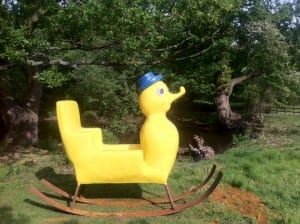
a six by eight foot rocking duck, which all the lecturers had to sit and rock back and forth in. Art should be playful and as artists, we sometimes need to remember that even though it requires effort, skill and time, we are in a privileged situation to express and enjoy our work with audiences who are looking to enjoy or revel in our accomplishments.
